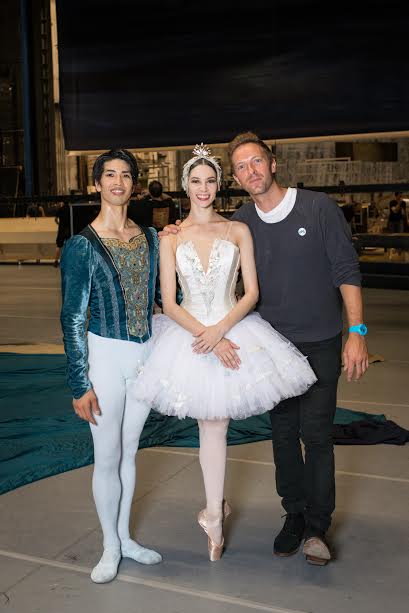Vienna Opera ‘endangered children’s health’
mainThe ballet academy attached to the Vienna State Opera has come out badly from an official investigation into allegations of abuse against child dancers.
Children, the inquiry has found, were encouraged to smoke cigarettes to keep their weight down and were verbally abused by teachers if they failed to stay ultra-slim.
Report here.







It is an old Viennese tradition to get physical instincts perfectly under control:
https://www.youtube.com/watch?v=O8QAfXYKCEY
Would encouraging children to smoke be felony child endangerment?
How common has been that kind of child abuse among other ballet schools in other countries? I fear any informed reply will be hard to bear, and hope I am wrong.
More glass-half-empty from “The Guardian”. The majority of Austrians smoke; MANY of these ballet students’ own parents would do so too.
If these ‘abuse’ claims are true it remains enigmatic to me why so many children would be competing to get into such an environment?
Never let complexity, subtlety and half-truths get in the way of a good victimhood cry from the Guardianistas. And make sure the kangaroo court is loaded up!!
Could a default setting added to this page please, to automatically dislike SSF’s ramblings without having to read through them first? Cheers.
“The article said pupils at the academy were hit, kicked, scratched until they bled, pulled by their hair and subjected to a stream of humiliating comments about their bodies. They received no psychological or nutritional support and some developed bulimia or anorexia, Falter claimed.”
The magazine in question is the Austrian magazine, Falter. The Guardian merely recounted the problem, which is not unique to Vienna.
But if you think that sort of treatment of children is merely “victimhood cry,” I can only pray you are not a parent, nor an aunt, nor anyone exposed to young children. And the fact that many Austrians smoke has nothing to do with encouraging children to smoke in the name of keeping their weight down. WTF is wrong with you?
I spent a lot of time around the National Ballet of Canada, a model for what ballet schools should be. Aside from taking serious care of the physical and mental health of their students, they make sure they are properly educated and prepared for l
ife outside ballet — whether they make it (to what is usually a short career) or don’t, in which case many of their graduates have gone on to universities and other institutes of higher learning and assumed other careers.
Other good schools have learnt from their example. Vienna would appear not to be one of them.
We’ve seen the linked report before — i.e. last April, when it came out. We could do with an update on the OFFICIAL investigation. Did you link what you meant to?
I’ve worked with a professional modern dance group in The Netherlands about 10 years ago. All of the dancers smoked heavily. I couldn’t grasp that, regarding dancing as hard physical work, a good physical condition being essential. But smoking your frustrations away (professional dancing means working in a highly competitive world) is seen by dancers as a better option than eating them away. And as long as you’re young the risks feel small…
Erik Bruhn, who smoked like a chimney, told me that dancers sweated all the nicotine out of their system between classes, rehearsals and performances!
He did NOT consider it an aid to weight maintenance.
Erik Bruhn died of lung cancer
Ummm…that’s the official story.
I have read a lot about Bruhn and before he died he had the classic symptoms of lung cancer, like excessive coughing. He may or may not have been HIV+ but that is not what killed him
Maria Tallchief stated that when she was married to Balanchine she would accompany him to art museums where he went to get ideas for his choreography. To him, much of the time, the portrait of a beautiful tableau was the object of the ballet and the dance steps were only an end to this purpose, not to illustrate a story or emotion. The dancers became nothing more than aesthetic objects.
Although Tallchief used no feminist rhetoric she stated that she started to become disillusioned with the marriage when, although working like a dog to get the New York City Ballet going and doing a lot of dancing in Ballanchine’s ballets, she slowly began to realize that she disagreed with his vision.
I was a big fan of ballet for several years and went to the New York City Ballet at least once a week during the season. During a time in my life when things and myself seemed to be spinning out of control I was very attracted to all that controlled energy and wanted to absorb it into my life.
I would imagine that others like ballet for the same reason.
However the psychological comfort to the audience comes as a steep price, that is, the exploitation of the dancers.
Nowadays, I am ambivalent, to say the least, about neo classical ballet, because of the potential for injury in doing all these unnatural steps and especially because of the objectification of the dancers, especially female dancers.
Although complaints about unnatural and damaging steps, poses, and the sexualization of ballet is nothing new (Isadora Duncan started modern dance as a rebellion against this) I am surprised that the feminist movement had not made the objectification of women in ballet more of a cause.
However, I believe that in spite of ignoring ballet the feminist movement HAS had an impact.
Ballet, and especially neo classical ballet, had a revival in the nineteen seventies, probably because of the sexual revolution, which in many ways exploited women, connected with the sexual aspect of ballet.
Now, I understand, the New York City Ballet is not doing so well. Many people can no longer relate or are no longer interested in relating to “idealized feminine beauty” which is generally just a euphemism for the objectification of women.
With regard to the Vienna State Opera one wonders why any school would want to decrease the students’ lung capacity which would interfere with dancing skill and professional development, but if the object is to turn the dancer into an aesthetic object this makes sense.
Of course, if young dancers are objectified i.e.thought of nothing more than moving dolls, then abuse cannot be far behind.
“decrease the students’ lung capacity which would interfere with dancing skill and professional development”: good point, assuming the teachers thought long term, as they should. What if they were more focused on immediate results?
That is exactly what I mean. If student dancers are thought of as nothing more than means to an end, creating the beautiful tableau, then the long term effect on them would be irrelevant
‘Many people can no longer relate or are no longer interested in relating to “idealized feminine beauty” which is generally just a euphemism for the objectification of women.’
Ballet is not about the objectification of women but about the beauty and expression of what the human body can do in terms of movement, it is an art form where the physical is being spiritualized, and this goes for both sexes. To look at it through feminist liberation glasses is missing the point entirely. One has to make a distinction between the art form and what people sometimes do to it in terms of abuse.
Mr. Borstlap, most of the time I believe that your comments are very insightful but after studying the history of ballet and reading the biographies of many dancers, I know that this time you are off the mark. “the physical is being spiritualized” or calling ballet “ethereal” etc is euphemizing, like calling pornography “eroticism”. Ballet is all about sex and when dancers dance without a plot or are not about expressing emotion, it is all about objectified sex.
No one understood this more clearly than Nureyev which is why he was so popular.
Addition: My comments on Tallchief came from her autobiograpy.